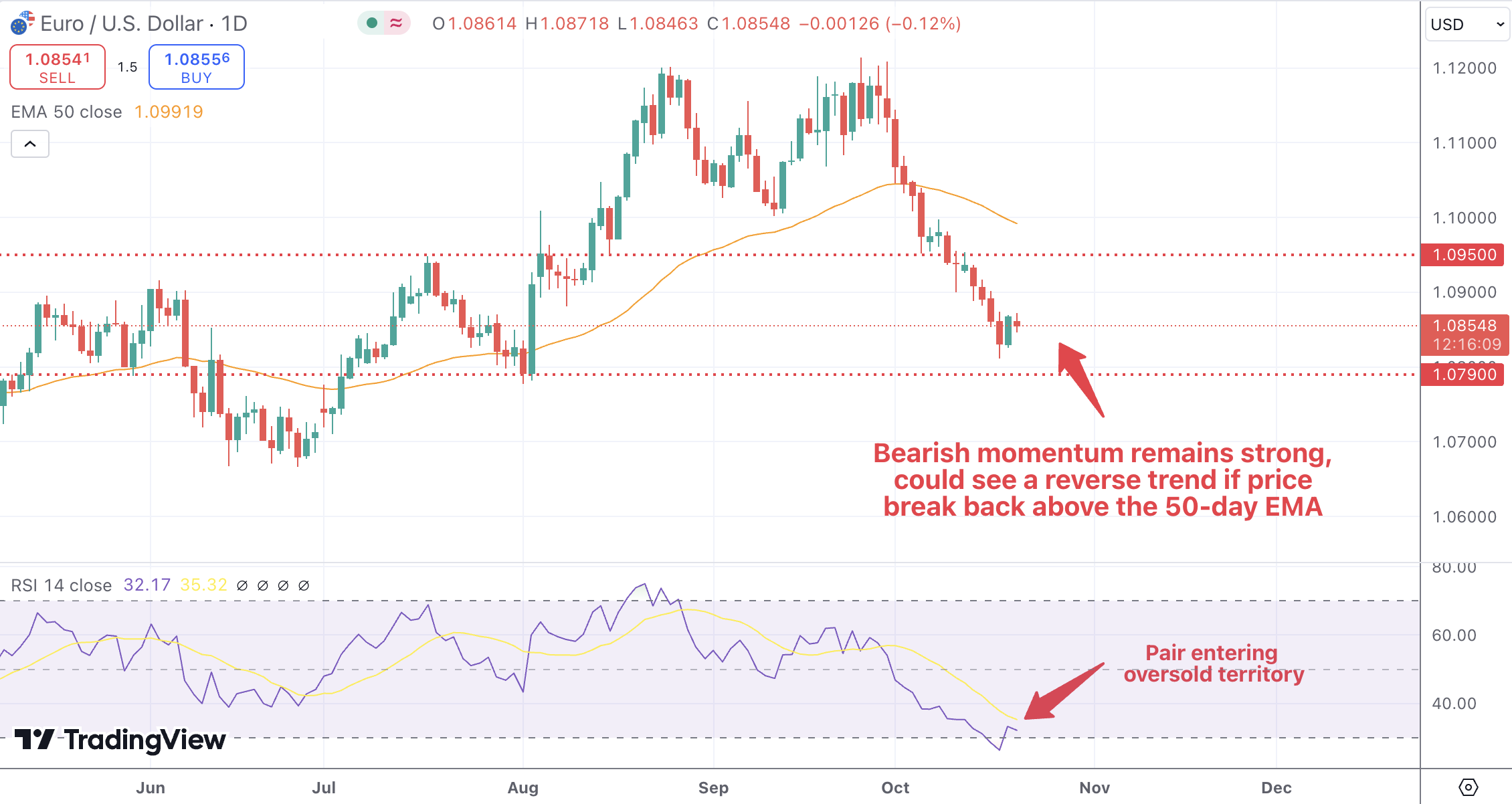Key Takeaways
- The pair remains under pressure, hovering around key support levels.
- ECB rate cuts and weak Eurozone data contrast with the Fed’s steady approach, driving the Euro lower.
- Upcoming U.S. election volatility and macroeconomic data will play a crucial role in determining the next move for EUR/USD.
Market Dynamics and Recent Performance
The EUR/USD pair has recently faced increased volatility as the U.S. dollar strengthens, driven by both geopolitical factors and economic uncertainties. As the U.S. election approaches, the dollar has seen a safe-haven demand, while the Euro struggles with weaker economic data from the Eurozone. Geopolitical tensions and fluctuating commodity prices, particularly energy costs, continue to impact the Euro negatively.
Technical and Fundamental Influences
Technically, the pair remains bearish, trading near crucial support levels around 1.0790. If the price breaks below 1.0760, further declines are expected. The Relative Strength Index (RSI) is sitting around 31.79, indicating the pair is approaching oversold territory. This could suggest that while the bearish momentum remains strong, the possibility of a corrective bounce may occur in the short term. However, the trend remains negative unless the pair can break back above the 50-day EMA and sustain momentum above 1.0900. The Euro is also pressured by the European Central Bank’s (ECB) dovish stance, with more rate cuts expected due to slowing inflation and growth.
Fundamentally, the U.S. economy remains more resilient, with the Federal Reserve balancing between rate reductions and stable growth. This has given the dollar an edge over the Euro, further widening the policy divergence between the Fed and the ECB. Eurozone inflation has fallen to 1.7% year-over-year, raising expectations for continued ECB easing, while the U.S. labor market remains strong, supporting the dollar’s bullish stance.
Looking Forward
In the week ahead, key data releases from both the Eurozone and the U.S. will be closely watched. Eurozone inflation data and U.S. retail sales reports could dictate the pair’s direction. The U.S. election, scheduled for November, adds further uncertainty, likely to keep the dollar well-supported in the short term. Should the political situation become more turbulent, demand for the dollar could rise further, potentially pushing EUR/USD lower.


